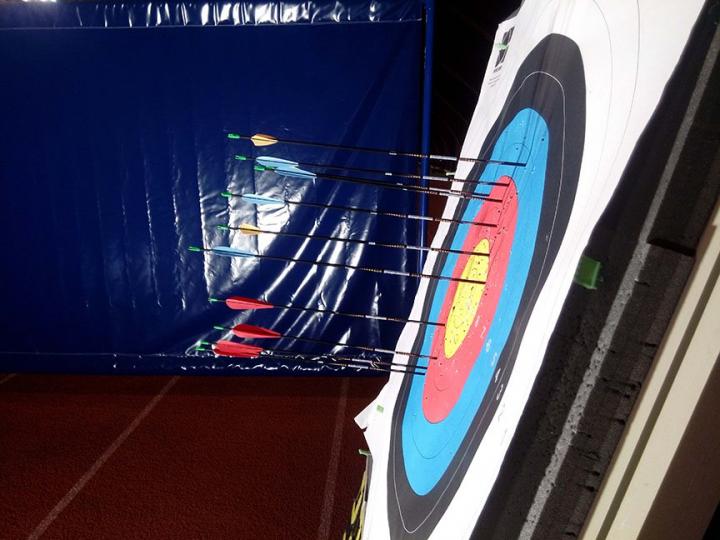Researchers examine how archery accuracy is affected by arrow size and shape, and the impact of wind conditions

Credit: Tom Maddalena
SEATTLE, November 23, 2019 – When it comes to archery, choosing the right feathers for an arrow is the key to winning. This necessity for precision makes it crucial to understand how environment and design effect arrows in flight.
Scientists from the Laboratoire d’Hydrodynamique at the Ecole Polytehcnique will explain the physics behind optimal arrow design at the 72nd Annual Meeting of the APS Division of Fluid Dynamics in Seattle on Saturday, Nov. 23. The presentation is part of a session on biological fluid dynamics in flight.
The researchers said the aspect of feather size and shape in archery accuracy not yet been studied in depth. To discover the optimal feather design, Tom Maddalena, Caroline Cohen and Christophe Clanet first shot arrows with various feathers using a throwing machine. They then used a wind tunnel to observe the aerodynamic forces on the arrow. These experiments were compared to theoretical models of arrow flight.
“We found that the best size depends on the environmental conditions. If there is no wind, a shooter must use very large feathers. The limit of the size is actually mostly dictated by geometrical constraints of the bow,” said Maddalena.
The authors plan to further investigate environmental effects on the arrows. Although large feathers provide more stability, they’re also affected more easily by the wind.
“We collaborated with the French Archery Federation to conduct this research. Currently, the choice of the feathers is based on intuition and comes directly from the athletes and their coaches. With our work, we hope able to tell them which feathers are the best, so that they can fully trust their equipment,” said Maddalena.
###
USEFUL LINKS
Main meeting website: https:/
Meeting technical program: http://meetings.
Invited talks: http://meetings.
Hotel information: https:/
GALLERY OF FLUID DYNAMICS
At the Annual Meeting, The Gallery of Fluid Motion will consist of posters and videos submitted by attendees illustrating the science and beauty of fluid motion. More information can be found here: https:/
PRESS REGISTRATION
We will grant free registration to credentialed journalists and professional freelance journalists. If you are a reporter and would like to attend, contact [email protected]. We can also help with setting up interviews and obtaining images, sound clips or background information.
LIVE MEDIA WEBCAST
A press briefing featuring a selection of newsworthy research will be webcast live from the conference on Monday, Nov. 25. Times and topics to be announced. Members of the media should register in advance at https:/
ABOUT DFD
The Division of Fluid Dynamics of the American Physical Society, established in 1947, exists for the advancement and diffusion of knowledge of the physics of fluids with special emphasis on the dynamical theories of the liquid, plastic and gaseous states of matter under all conditions of temperature and pressure. For more information about DFD, visit https:/
ABOUT APS
The American Physical Society (APS) is a nonprofit membership organization working to advance and diffuse the knowledge of physics through its outstanding research journals, scientific meetings, and education, outreach, advocacy, and international activities. APS represents over 55,000 members, including physicists in academia, national laboratories, and industry in the United States and throughout the world. For more information about APS, visit https:/
Media Contact
APS Communications
[email protected]




